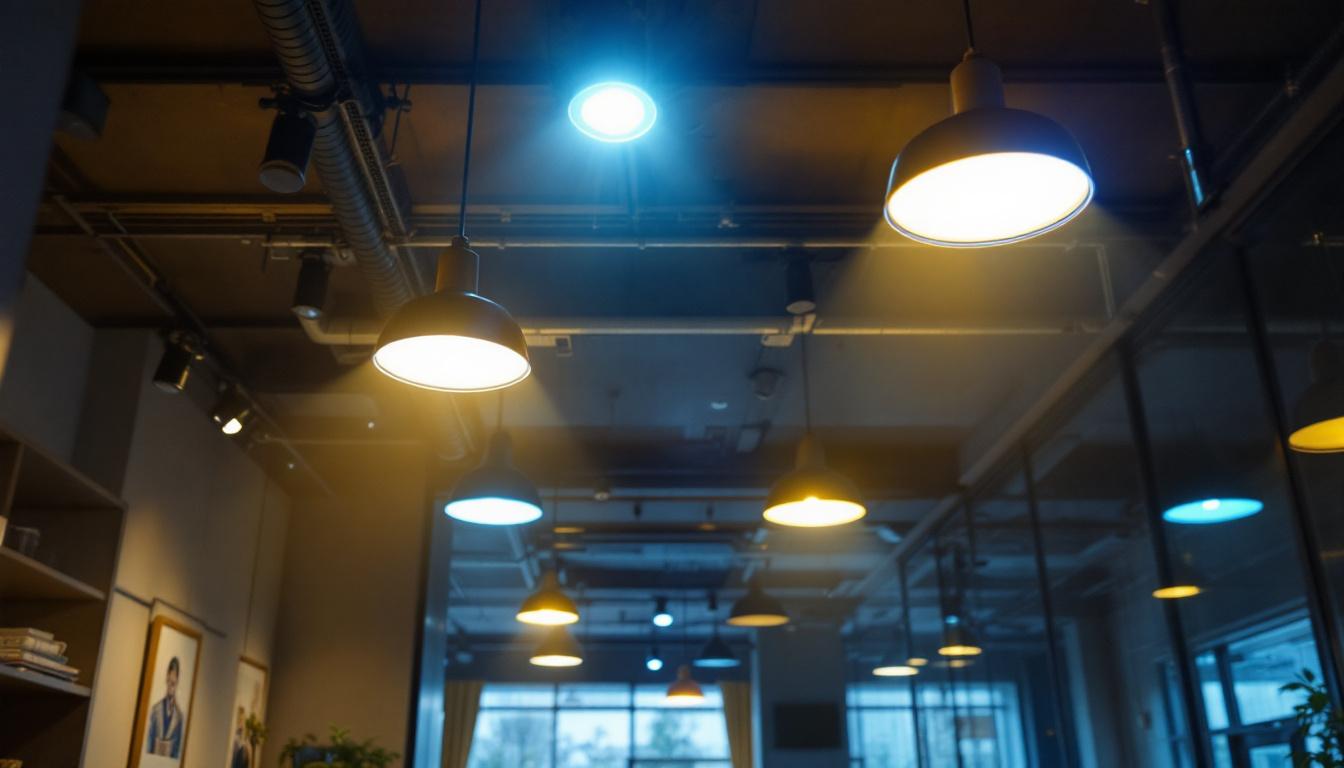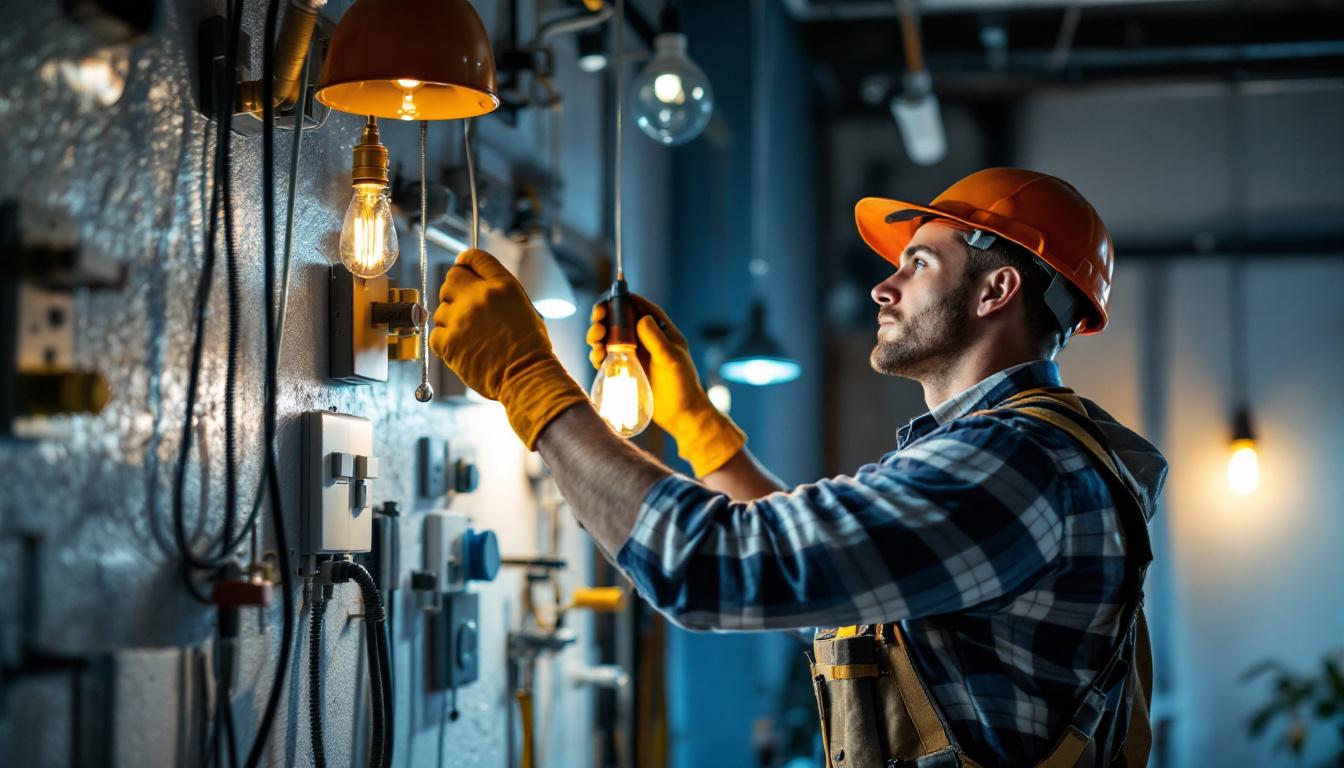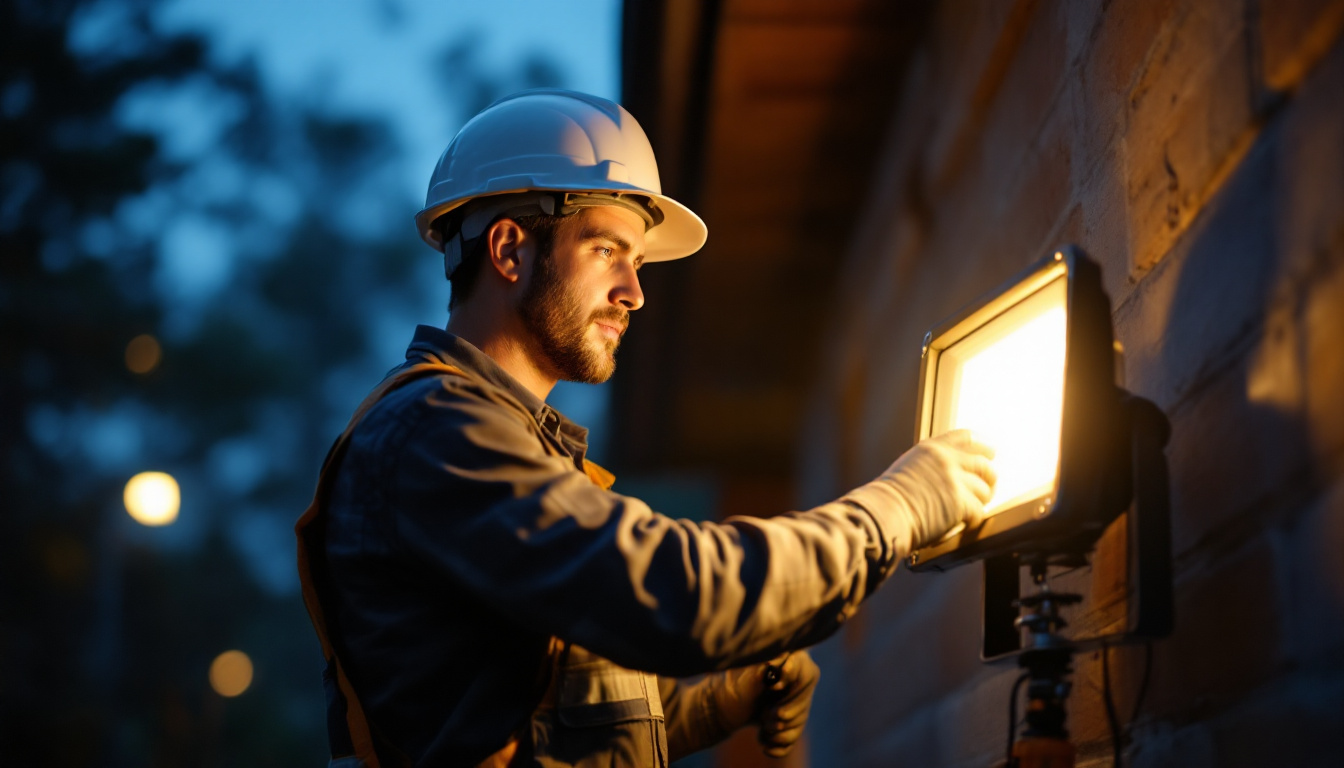
Explosion-proof lighting is not just a niche specialty; it is a vital safety feature in many industrial and hazardous environments. Clients expect lighting contractors to have a thorough understanding of explosion-proof lighting systems, including their design, certification, and installation requirements. These lighting solutions are engineered to prevent ignition of flammable gases, vapors, or dust, which can lead to catastrophic explosions.
For lighting contractors, this means more than just installing fixtures—it requires a deep knowledge of the environments where these lights will be used. Clients often operate in sectors such as oil and gas, chemical processing, mining, and grain handling, where the risk of explosion is significant. Therefore, contractors must be familiar with the standards and codes that govern explosion-proof lighting to ensure compliance and safety.
Explosion-proof lighting fixtures are designed to contain any sparks or flames generated within the fixture, preventing them from igniting the surrounding atmosphere. These fixtures are typically sealed and constructed from robust materials like cast aluminum or stainless steel. The design ensures that even if an internal explosion occurs, it does not propagate outside the fixture.
Clients expect contractors to know the difference between explosion-proof, intrinsically safe, and purged lighting systems, as each has specific applications and safety parameters. This knowledge helps contractors recommend the right solution based on the client’s operational environment. For instance, intrinsically safe systems limit the energy output to a level that is incapable of causing ignition, making them suitable for areas with highly volatile substances. In contrast, purged systems utilize a continuous flow of air to keep the internal environment of the fixture free from explosive gases, making them ideal for environments where flammable vapors may be present intermittently.
Clients rely on contractors to be well-versed in relevant standards such as those from the National Electrical Code (NEC), Underwriters Laboratories (UL), and the International Electrotechnical Commission (IEC). For example, NEC Articles 500-506 outline the classification of hazardous locations and the requirements for electrical equipment used therein.
Understanding certifications like UL844 for hazardous location lighting or IECEx certification for international compliance is crucial. Clients expect contractors to ensure that all installed explosion-proof lighting meets or exceeds these standards to guarantee safety and regulatory compliance. Additionally, contractors should be aware of the latest advancements in lighting technology, such as LED explosion-proof fixtures, which offer improved energy efficiency and longer lifespans compared to traditional lighting options. These modern solutions not only enhance safety but can also lead to significant cost savings for clients over time, as they reduce maintenance needs and energy consumption.
Beyond theoretical knowledge, clients expect lighting contractors to demonstrate technical proficiency in the installation and maintenance of explosion-proof lighting systems. Proper installation is critical to maintaining the integrity of explosion-proof enclosures and ensuring ongoing safety. The stakes are particularly high in environments where flammable gases or dust are present, making the role of the contractor not just a technical one, but also a vital component of workplace safety culture.
Clients look for contractors who follow meticulous installation procedures, including proper sealing of conduit entries, correct torqueing of fixture components, and verification of grounding and bonding. These steps prevent potential ignition sources and maintain the explosion-proof integrity of the lighting system. Furthermore, contractors are expected to employ the latest technologies and tools to facilitate precise installations, such as thermal imaging cameras to identify potential hotspots or infrared sensors to assess electrical connections.
Additionally, contractors must be adept at interpreting hazardous area classifications to select appropriate fixtures and installation methods. Misapplication can lead to safety hazards and costly downtime for the client. Understanding the nuances of different classifications—such as Class I, II, and III—enables contractors to tailor their approach to the specific risks associated with each environment. This knowledge not only enhances safety but also fosters trust between the contractor and the client, as it demonstrates a commitment to understanding the unique challenges of the client’s operational landscape.
Explosion-proof lighting requires regular inspection and maintenance to ensure continued safe operation. Clients expect contractors to provide maintenance plans that include checking for physical damage, corrosion, and the condition of seals and gaskets. In addition to these routine checks, contractors should also implement advanced monitoring systems that can provide real-time data on the performance of the lighting fixtures. Such systems can alert clients to potential issues before they escalate, allowing for timely interventions that prevent costly repairs or safety incidents.
Contractors should also be knowledgeable about the replacement intervals for lamps and components to prevent failures that could compromise safety. Proactive maintenance reduces the risk of unexpected outages and enhances the longevity of the lighting system, which clients highly value. Moreover, educating clients on the importance of maintaining a consistent maintenance schedule can empower them to take an active role in their safety protocols. This collaborative approach not only strengthens the contractor-client relationship but also ensures that safety remains a top priority in all operational activities.
While safety is paramount, clients increasingly expect lighting contractors to offer solutions that balance safety with energy efficiency and modern technology. Explosion-proof lighting has evolved significantly, incorporating LED technology and smart controls.
LED fixtures offer numerous advantages over traditional incandescent or fluorescent explosion-proof lights, including lower energy consumption, longer lifespan, and reduced heat output. These benefits translate into cost savings and improved safety for clients operating in hazardous environments. Additionally, the durability of LED lights makes them particularly suitable for harsh conditions, as they are less prone to breakage and can withstand vibrations and extreme temperatures, which is essential in industries such as oil and gas, chemical manufacturing, and mining.
Lighting contractors must be knowledgeable about the specific LED products designed for hazardous locations, including their photometric performance and compatibility with existing systems. Clients expect guidance on selecting LED fixtures that meet their operational needs without compromising safety standards. Moreover, understanding the intricacies of local regulations and compliance requirements is crucial, as it ensures that the selected lighting solutions not only enhance safety but also adhere to industry standards, thereby minimizing the risk of costly penalties or operational disruptions.
Emerging technologies such as wireless controls, motion sensors, and dimming capabilities are becoming more common in explosion-proof lighting systems. These features allow clients to optimize energy use and enhance operational efficiency. For instance, motion sensors can automatically turn lights on or off based on occupancy, significantly reducing energy waste in areas that are not continuously staffed. This level of automation not only contributes to lower energy bills but also extends the lifespan of the lighting fixtures, further enhancing the return on investment.
Contractors who understand how to integrate smart controls into explosion-proof lighting systems can provide added value by improving client facility management and reducing operational costs. This expertise is increasingly sought after in competitive bids and long-term service agreements. Furthermore, the ability to offer remote monitoring and control capabilities allows clients to manage their lighting systems from anywhere, providing real-time data on energy consumption and system performance. This data-driven approach empowers clients to make informed decisions, optimize their operations, and ultimately contribute to sustainability goals, which are becoming a priority for many organizations in today’s environmentally conscious market.
Clients expect lighting contractors to be effective communicators who can clearly explain complex technical information and compliance requirements. Transparency and education build trust and ensure that clients are confident in the safety and reliability of their lighting systems. Establishing open lines of communication not only helps in addressing immediate concerns but also fosters a long-term relationship that can lead to repeat business and referrals. By regularly updating clients on industry trends and regulatory changes, contractors can position themselves as knowledgeable allies in navigating the complexities of lighting compliance.
Clients rely on contractors to supply comprehensive documentation, including installation manuals, certification records, and maintenance schedules. This documentation is essential for audits, regulatory inspections, and internal safety programs. Furthermore, having a well-organized digital repository of these documents allows clients to access vital information quickly, facilitating smoother operations and enhancing overall efficiency. By ensuring that all documentation is not only thorough but also easily accessible, contractors can significantly reduce the time clients spend on compliance-related tasks.
Contractors should also provide clear risk assessments and compliance reports that demonstrate adherence to industry standards. This level of detail reassures clients and supports their commitment to workplace safety. In addition, offering customized compliance checklists tailored to specific client needs can empower clients to take proactive measures in maintaining their lighting systems, thereby minimizing potential risks and liabilities.
Clients appreciate contractors who offer training for their maintenance personnel on the proper handling and servicing of explosion-proof lighting. This training helps prevent accidental damage and ensures that safety protocols are followed. Moreover, incorporating hands-on training sessions and interactive workshops can enhance the learning experience, allowing maintenance staff to engage directly with the equipment they will be working on. By providing a thorough understanding of the lighting systems, contractors can help clients maximize the lifespan and performance of their installations.
Ongoing support, including emergency response services and rapid replacement parts availability, further enhances client satisfaction. Lighting contractors who position themselves as trusted partners rather than just installers gain a competitive edge in the market. Additionally, offering regular follow-up consultations to assess the effectiveness of the lighting systems and address any emerging issues can further solidify this partnership. This proactive approach not only demonstrates a commitment to client success but also helps in identifying opportunities for system upgrades or enhancements that can lead to improved energy efficiency and cost savings for clients.
Explosion-proof lighting is a specialized field that demands a high level of expertise from lighting contractors. Clients expect contractors to possess comprehensive knowledge of hazardous environment requirements, technical installation skills, and the ability to integrate modern, energy-efficient technologies.
By prioritizing safety, compliance, and client communication, lighting contractors can build strong relationships and deliver solutions that protect lives and assets. Staying current with industry standards, technological advancements, and client needs is essential for success in this critical market segment.
Ready to elevate your lighting solutions in hazardous environments? At LumenWholesale, we provide lighting contractors with the highest quality explosion-proof lighting options. Our spec-grade products not only meet but exceed industry standards, ensuring you deliver safety and efficiency on every project. With unbeatable wholesale prices and the convenience of free shipping on bulk orders, you can trust LumenWholesale to light up your work without the burden of inflated costs. Discover wholesale lighting at the best value today and experience the difference in quality, affordability, and service.

Discover effective strategies and innovative techniques for lighting contractors in this comprehensive guide.

Explore the transformative role of modern lighting solutions in greenhouses, enhancing plant growth and sustainability.

Discover how Rab Lighting Flood Lights are revolutionizing the lighting industry by enhancing efficiency and precision for contractors.

Discover expert strategies and proven methods for lighting contractors to effectively illuminate garages with LED lighting.